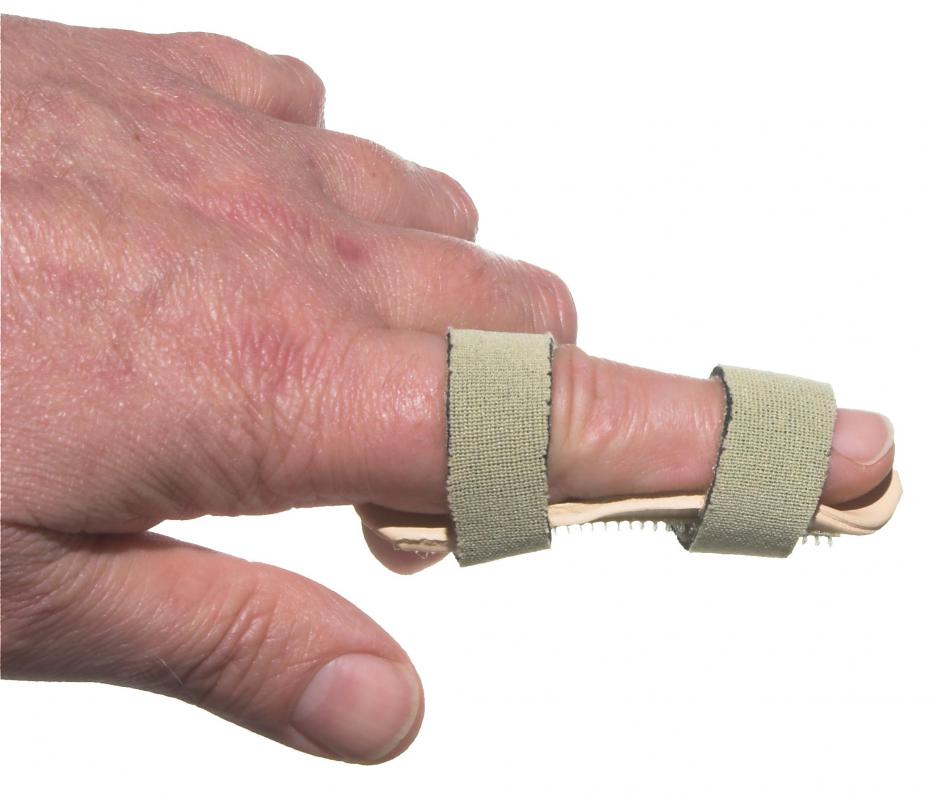At WiseGEEK, we're committed to delivering accurate, trustworthy information. Our expert-authored content is rigorously fact-checked and sourced from credible authorities. Discover how we uphold the highest standards in providing you with reliable knowledge.
What is a Finger Tendon?
A finger tendon is one of several a string-like cables that allows the fingers to move. Since the fingers contain no muscles, their movement is supplied only by these fibrous chords. Tendons also provide a link or connection between the fingers, wrist, and forearm.
The tissue of a finger tendon is tough and flexible without being elastic. In other words, finger tendons have enough give to allow for the fingers to move, but not beyond a certain point. Motion is supplied to the tips of the fingers by way of the flexor digitorum profundus tendon. The flexor digitorum sublimis tendon hooks the hand muscles to the middle of the finger. These two finger tendons allow for the fingers to close or flex.

On the back of the hand, the forearm muscles pass through the hand and connect to the fingers by way of the extensor tendons. There are branches on either side of the finger bones which join the middle and ends of the finger to allow for whole finger movement. These tendons are responsible for the ability of the fingers to straighten.
Encasing each finger tendon is a sheath. This thin dual-layer covering offers protection to the tendons by keeping them close to the finger bones and shielding them from damage. On the outside, the sheath is tough yet flexible. Synovium can be found inside this channeled protective membrane. This fluid acts as a cushion which reduces friction that can be caused as the tendons generate movement in the fingers.

Problems with a finger tendon can be created when the tendon no longer slides freely inside the tendon sheath. Impaired or limited movement of the tendons can be caused by damage to the tendons themselves or to the protective shell, which in turn produces inflammation or swelling. This can thicken the tendon and raise the resistance inside the casing. Inflammation may also cause the tunnel which houses the tendons to become smaller, leading to the tendon rubbing against the walls of the sheath. Enough constriction of the sheath may bring about impaired tendon movement in the form of a cog wheel or catching motion.
A decline in finger movement can also be instigated if the tendon itself is damaged. Excessive finger extension beyond normal movement, for example, can trigger minute slits or rips of the tendon, called micro-tears, which disrupt the continuity of the tendon. These minuscule splits of the finger tendon tissue can impede tendon movement. This, in turn, hampers the movement of the fingers.
AS FEATURED ON:
AS FEATURED ON:












Discuss this Article
Post your comments